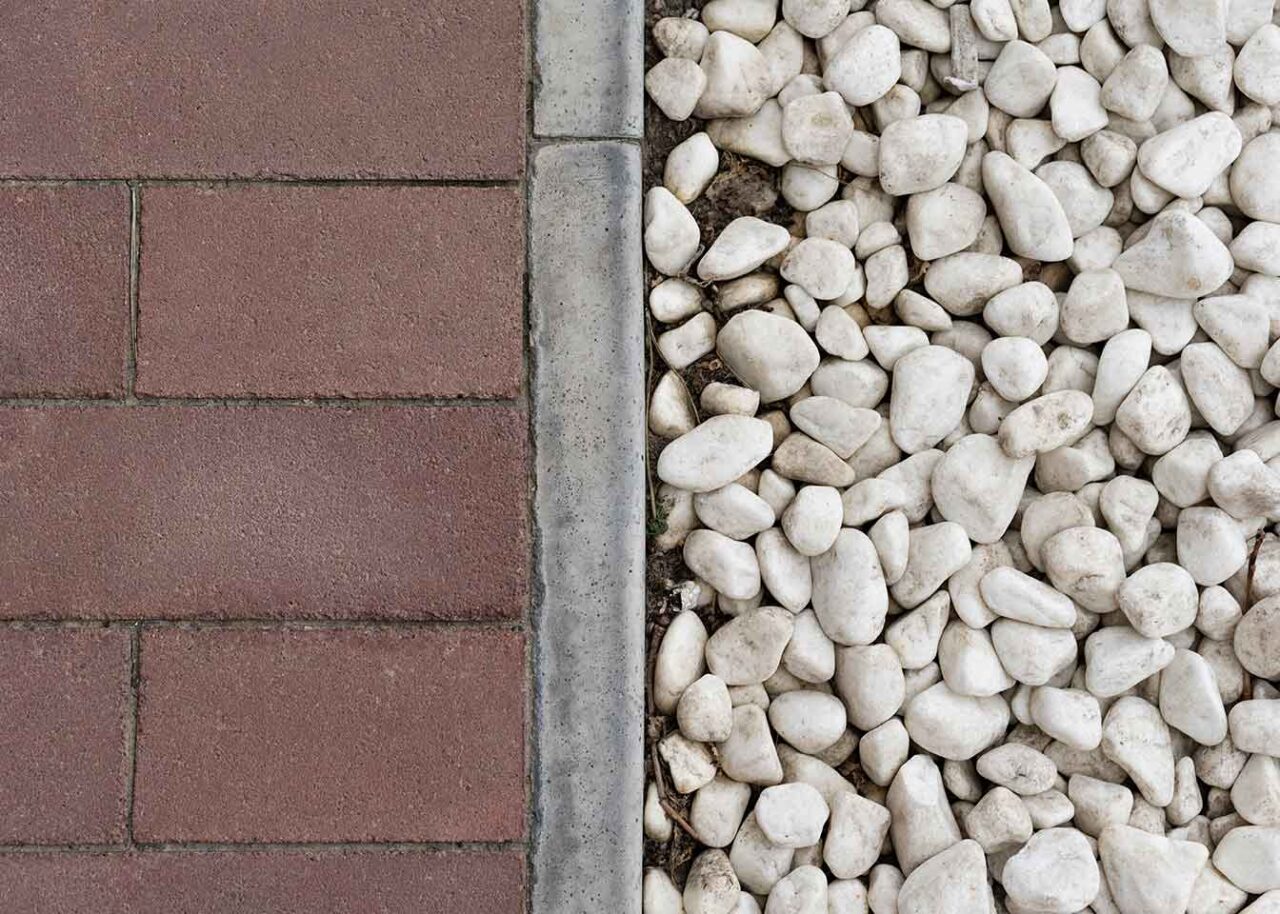Advantages and Disadvantages of Stamped Concrete vs Pavers
Discover the primary distinctions between opting for pavers vs stamped concrete for your driveway or patio, and make an informed choice about the most suitable option for your project.
Visual Aspect
Pavers enable the creation of captivating patterns using exquisite materials. When utilizing stamped concrete, a skilled contractor like SUNDEK of Washington can skillfully replicate the appearance of nearly any type of paver by applying stamps and concrete staining.
Stamped concrete offers a broader range of design choices compared to pavers. Paver options are confined to limited colors, shapes, and textures. In contrast, concrete stamping provides the flexibility to select from an extensive array of available stamps provided by your contractor or even commission a custom stamp tailored to your design preferences. This flexibility also extends to colors—customers can choose from a diverse palette, ensuring the desired aesthetic outcome.
A drawback when working with pavers is that when covering a substantial area, the color of pallets of pavers might exhibit slight variations. Stamped concrete, however, eliminates worries about color discrepancies.
Durability Over Time
While pavers are known for their durability, some clients opt for stamped concrete over pavers due to the following reasons:
- Pavers have the potential to shift and settle over time, whereas stamped concrete offers a cohesive surface that mimics the appearance of interlocked pavers.
- In the event of a cracked paver, it necessitates removal and replacement from its position. Conversely, cracked concrete can often be treated directly at the affected spots.
- Unless the joints are consistently sealed, weeds might emerge between pavers as time goes on. Does concrete tend to be more slippery compared to pavers?
Pavers typically possess a natural texture that lends them a non-slip quality, while contractors can employ methods to achieve a non-slip surface with stamped concrete. Contractors can introduce a textured finish that adds traction or add an additive to the sealer to mitigate slipperiness when wet surfaces.
Between pavers and concrete, which material absorbs more heat?
Established professionals like SUNDEK of Washington collaborate with top-notch materials and implement methods to guarantee that the stamped concrete surface remains touch-friendly even on scorching summer days. Generally, a correctly laid decorative concrete surface maintains a cooler temperature than pavers. This quality positions stamped concrete as an excellent choice for surfaces like pool decks or regions where people might tread barefoot.
Besides selecting the suitable texture, picking the right color can aid in temperature management. Light shades generally remain cooler in comparison to darker ones.
Between stamped concrete and pavers, which option comes with a higher cost?
If you decide to go for premium natural stone pavers, the combined expense of materials and labor could equal or even exceed the cost of choosing stamped concrete.
Opting for budget-friendly pavers could result in a more cost-effective choice compared to the installation of stamped concrete.
But it’s important to remember that lower-end pavers won’t hold up as long as a stamped concrete surface or one surfaced using high-end pavers.
The ultimate expense is contingent on factors such as the surface area’s dimensions, the current state of the surface, material selections, the chosen pattern style, and the number of colors integrated.
Which option is more straightforward to upkeep?
It’s essential to understand that neither paving choice is exempt from maintenance. Here’s a brief outline of their upkeep needs. The frequency of performing these maintenance activities will hinge on the usage level and impact your surface endures.
Pavers necessitate the subsequent upkeep:
- Sand infill for the joints
- Eradication of weeds that might emerge amidst pavers.
- Applying a protective sealant
- Substituting fractured or impaired pavers
- Whereas stamped concrete necessitates:
- Intermittent sealing to safeguard the surface
- Periodic cleaning to eliminate dirt and debris.
- Repairing or filling any cracks that appear
Transform your home effortlessly with FloorPup! Discover our extensive range of hardwood flooring, receive tips from expert floor care and maintenance professionals. Our team includes professional floor fitters, skilled driveway pavers, and dependable carpet repair specialists, ensuring top-notch results. Learn more about our dedication to quality on our About Us page. Visit FloorPup and start enhancing your living space today!
FAQS
Do pavers get as hot as concrete?
“Are pavers as heat-absorbent as concrete? This common question pertains to their temperature response. Typically, pavers remain cooler than concrete, particularly when exposed to sunlight. This difference is due to the pavers’ porous nature and composition. Concrete, being denser, tends to become hotter as it absorbs and retains heat. This distinction makes pavers preferable for spaces where minimizing heat buildup matters, like around pools or walkways.”
How do you make pavers less hot?
Opt for lighter-hued materials that absorb less sunlight to mitigate pavers’ heat retention. Choose pavers with reflective or absorbent surfaces to enhance heat dispersion and water drainage. Incorporating shading elements like trees or pergolas can offer respite from direct sunlight. Applying a heat-reducing sealer also makes pavers cooler and more comfortable for walking.
Do pavers radiate heat?
Do pavers radiate heat? Indeed, pavers can absorb and emit heat, influenced by their material and sun exposure. Lighter pavers reflect heat, while darker ones absorb and release it, leading to localized warmth in outdoor settings. This thermal behavior is a key consideration for landscaping and design choices.
Is it better to do Stamped concrete vs Pavers ?
Deciding between pavers and concrete boils down to assessing their merits. Concrete is prized for its durability and consistent look, while pavers offer flexibility, simpler repairs, and diverse styles. The decision rests on factors like budget, design preferences, and the intended use of the space.


